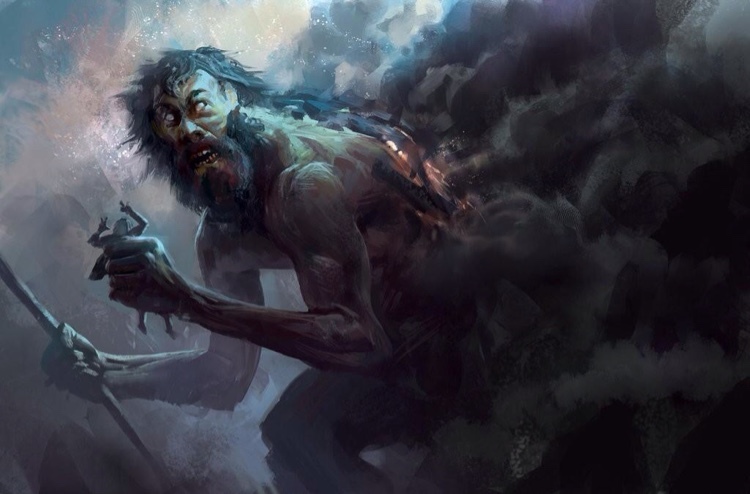Rig Veda- The Connecting Link
The Rigveda (Sanskrit: ऋग्वेद ṛgveda, a compound of ṛc "praise, verse"and veda "knowledge") is an ancient Indian sacred collection of Vedic Sanskrit hymns.It is counted among the four canonical sacred texts (śruti) of Hinduism known as the Vedas.Some of its verses are still recited as Hindu prayers, at religious functions and other occasions, putting these among the world's oldest religious texts in continued use. The Rigveda contains several mythological and poetical accounts of the origin of the world, hymns praising the gods, and ancient prayers for life, prosperity, etc.
It is one of the oldest extant texts in any Indo-European language. Philological and linguistic evidence indicate that the Rigveda was composed in the north-western region of the Indian subcontinent, roughly between 1700–1100 BC (the early Vedic period). There are strong linguistic and cultural similarities with the early Iranian Avesta, deriving from the Proto-Indo-Iranian times, often associated with the early Andronovo and Sintashta-Petrovka cultures of c. 2200 – 1600 BC.
According to my views Rig Veda is the connecting link between the Greek Mythology and Hindu Mythology. The Indian Mythology starts where the greek myths ends...Greek Myths talks about Zeus(dyaus) as the King of Gods and also as the supreme being. But still Zeus(dyaus) deeds are monitored by another being which greek legends indirectly speaks off.In Rig veda, his scope greatly reduced, most aspects of his mythology being taken over by his son Indra, but he remains enshrined in several hymns.
 |
| Dyaus pita(Zeus) |
THE CREATOR
 |
| Brahmadev |
Rig veda speaks of the creator as an unknown god who came out of the golden embryo. The creator in his hymn is called Hiranyagarbha, a truly pregnant term.It is a compound noun, whose first element means "gold" and whose second element "womb,seed,embryo or child" in Rig Veda and later comes to mean "Egg"; this later meaning becomes prominent in the cosmogonic myth of the golden egg.
From Brahmapurana:
"According to the Purāņas, Brahmā is self-born in the lotus flower. Another legend says that Brahmā was born in water, or from a seed that later became the golden egg. From this golden egg, Brahmā, the creator was born, as Hiranyagarbha. The remaining materials of this golden egg expanded into the Brahmānḍa or Universe. Being born in water, Brahmā is also called as Kanja (born in water)."
Now we understand that Brahmadev was the "Unknow creator" that the vedic texts speaks off.
Brahmā (Sanskrit: ब्रह्मा; IAST: Brahmā) is the Hindu god of creation and one of the Trimūrti, the others being Vishnu and Shiva.
Trimurti
According to the Brahmā Purāņa, he is the father of Manu, and from Manu all human beings are descended. In the Rāmāyaņa and the Mahābhārata, he is often referred to as the progenitor or great grandsire of all human beings. He is not to be confused with the Supreme Cosmic Spirit in Hindu Vedānta philosophy known as Brahman, which is genderless. Brahmā's wife is Saraswati. Saraswati is also known by names such as Sāvitri and Gāyatri, and has taken different forms throughout history. Saraswati is the Vedic Goddess, revered as Vedamāta, meaning Mother of the Vedas.The origin of Bhairava can be traced to the conversation between Lord Brahma and Lord Vishnu recounted in "Shiv Maha-Puran" where Lord Vishnu asks Lord Brahma who is the supreme creator of the Universe. Arrogantly, Brahma tells Vishnu to worship him because he (Brahma) is the supreme creator. This angered Mahadev who then incarnated in the form of Bhairava to punish Brahma. Bhairava beheaded one of Brahma's five heads and since then Brahma has only four heads. When depicted as Kala Bhairava, Bhairava is shown carrying the decapitated head of Brahma. Cutting off Brahma's fifth head made him guilty of the crime of killing a Brahmin(Brahmahatyapap), and as a result, he had to carry around the decapitated skull for twelve years and roam as Bhikshatana, a mendicant, until he had been absolved of the sin.
Face of Kal Bhairav
CREATION:
At the beginning of the process of creation, Brahmā creates the four Kumāras or the Caturṣaņa. However, they refuse his order to procreate and instead devote themselves to God and celibacy.
He then proceeds to create from his mind ten sons or Prajāpatis (used in another[which?] sense), who are believed to be the fathers of the human race. But since all these sons were born out of his mind rather than body, they are called Mānas Putras or mind-sons or spirits. The Manusmŗti and Bhāgavat Purāņa enumerate them as:[citation needed]
Brahmā had nine sons and one daughter born from various parts of his body:[citation needed]
Marichi
Atri
Angirasa
Pulaha
Pulasthya
Krathu
Vashista
Prachethasa
Bhrigu
Narada
Rishi Marichi or Mareechi or Marishi (ṛṣi Marīci, ऋषि मरीचि) (meaning a ray of light) is the son of Brahma, the cosmic creator, and also one of the Saptarshi.Kashyap was one of the Saptarshi Brahmins. According to Hindu Mythology, he is the son of Marichi, one of the ten sons (Manasa-putras) of the Creator Brahma. The Prajapati Daksha had his thirteen daughters (Aditi, Diti, Kadru, Danu, Arishta, Surasa, Surabhi, Vinata, Tamra, Krodhavaśā, Ida, Khasa and Muni) married to Kasyap.
 |
| Kashyap and one of his wifies |
He was the father of the Devas, Asuras, Nagas and all of humanity. He married Aditi, with whom he fathered Agni, the Adityas, and most importantly Lord Vishnu took his fifth Avatar as Vamana, the son of Aditi, in the seventh Manvantara. With his second wife, Diti, he begot the Daityas. Diti and Aditi were daughters of King Daksha Prajapati and sisters to Sati, Shiva's consort.






Comments
Post a Comment